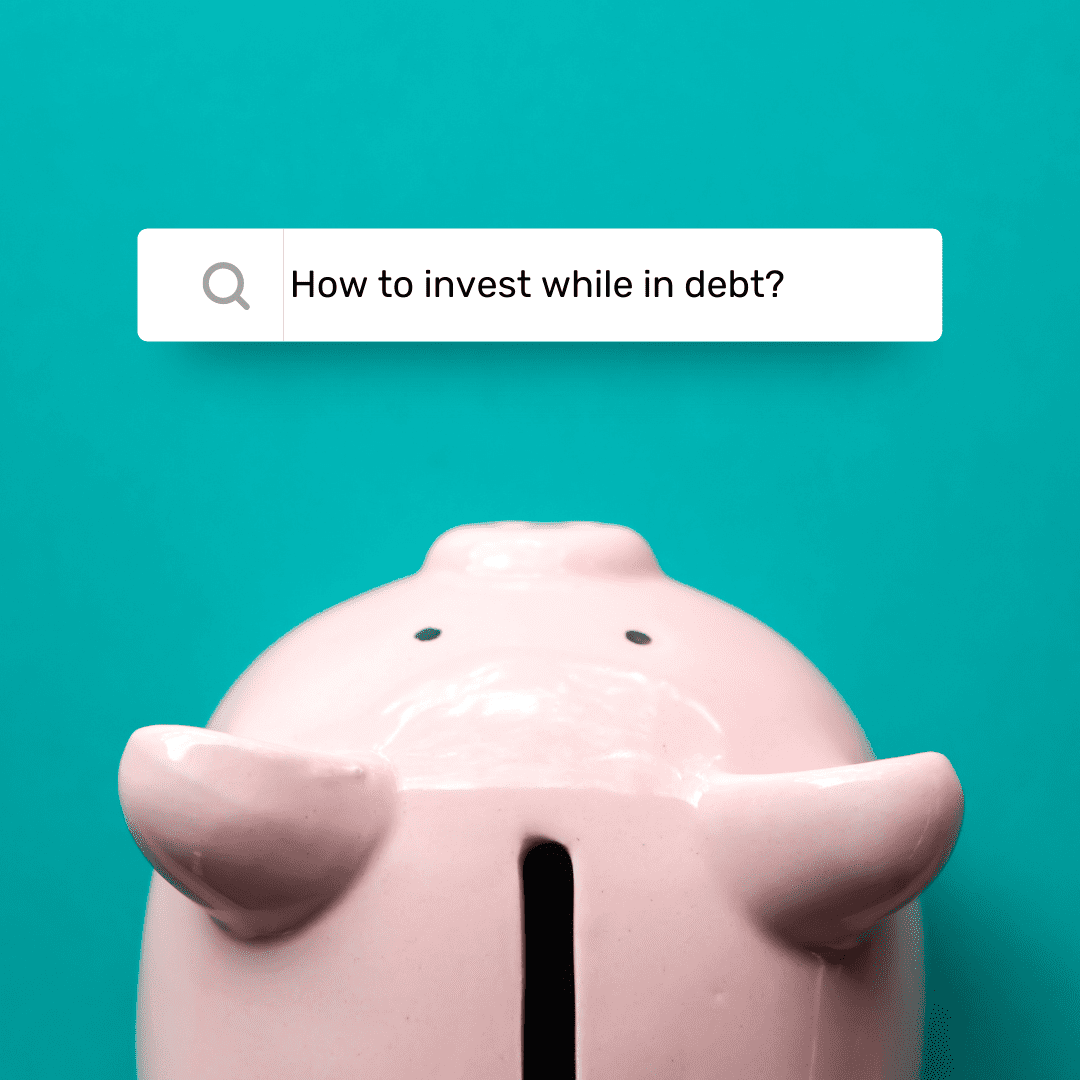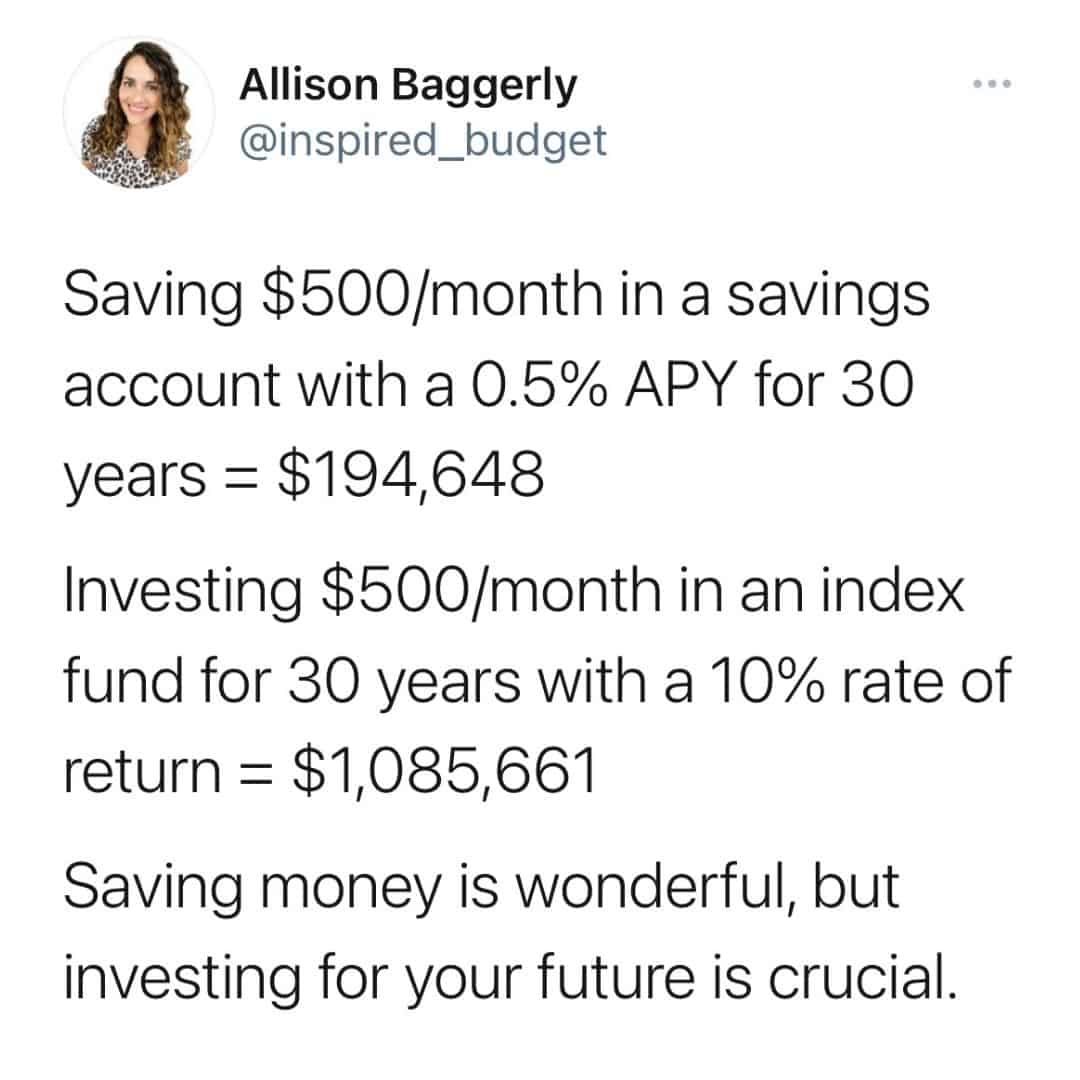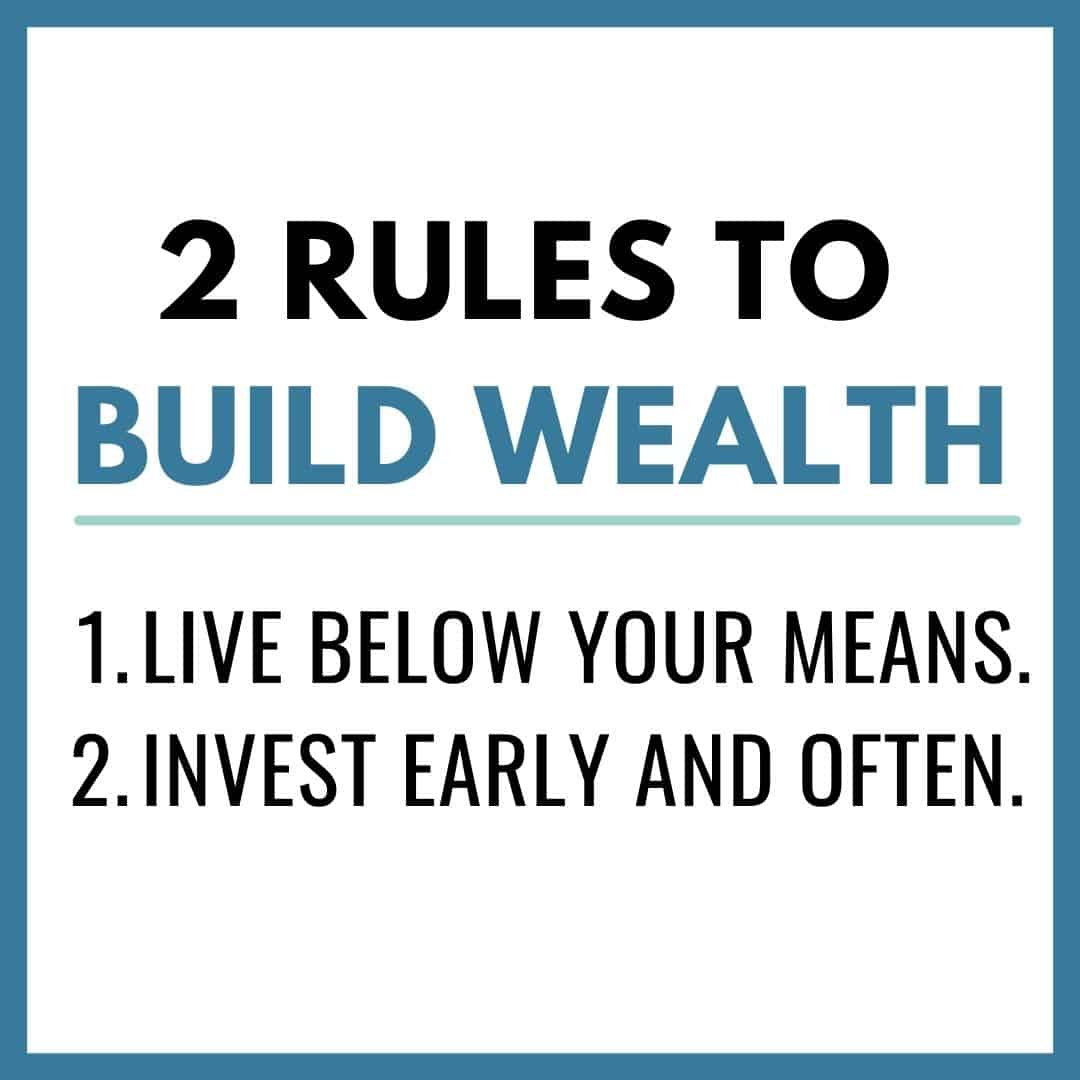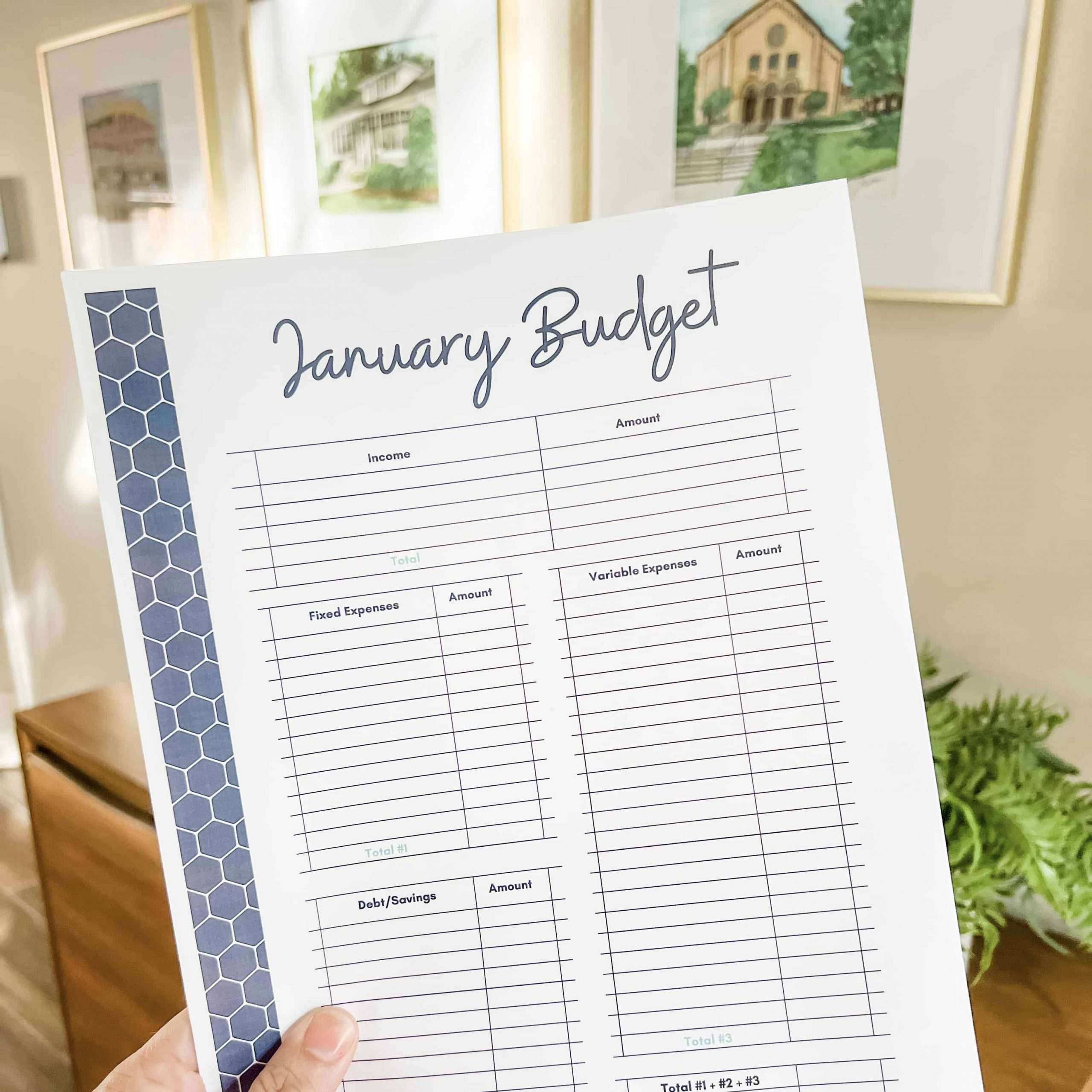We all know that investing is a good idea…when you have the money to invest. We also know that the sooner you start, the higher the yield is over time. Some investments grow exponentially, but waiting too long could mean the potential loss of thousands of dollars. But what if you feel stuck in debt you can’t climb out of? Is it still a good idea to invest? Well…maybe. It is possible to invest while paying off debt – and it can be beneficial too!
Looking into the future and thinking of retirement can feel daunting or frankly even impossible when you are under a mountain of debt. You might feel like if you don’t immediately start to invest while paying off debt, you’ll never have enough when the time comes. But, on the other hand, you may not feel sure about taking money away from paying off debt to invest it.
What’s a girl to do?
First of all, let me say that this conflict is totally valid. You aren’t alone!
Ways To Invest While Paying Off Debt
The good news is that you can invest while paying off debt. There are a lot of things you must keep in mind as you push money toward financial freedom in the near future and financial security in the distant future.
The first such consideration is in the type of investment you are going to make. While we automatically think of the stock market when it comes to investing, it’s important to think of ways to invest back in yourself by “paying yourself” both now, and in the future.
Here are some common options for where you can put some of your money when you “pay yourself” each month.
1. Savings Account
Before you dive into investing for retirement, it’s important to have quick access to money in a savings account. The easiest and probably the most obvious place to start when you think about investing is in your own bank account. Some checking accounts incentivize or require a savings account that your checking account automatically transfers a base sum to each month.
You probably have a savings account if you have a checking account, but that doesn’t mean it’s accruing a balance. For example, you may be having to transfer that money back each month, or you may find the bank is doing that for you and charging an overdraft fee on top of it.
However, savings accounts are a good place to start managing your money. You can begin by making sure you don’t overdraft anymore and keep plenty of money in the account. If you do find that you need the money, you can use it without penalties, unlike other forms of investment that require a more hands-off approach.
A regular savings account makes a good training ground for learning how to set aside money while also helping you determine how much money you can realistically set aside without having to take it out to make your payments.
While saving money in a savings account is great, it will not beat the cost of inflation over time. It’s a great starting point, but you’ll want to consider investing in a retirement account for your future!

2. High Yield Savings
Once you have built up a good cushion in your savings account, you should start to consider an account that pays higher interest. Now, finding a bank for your high-yield earnings is tough enough, but if you do your due diligence and weigh the pros and cons of all your options, you can benefit from your decision to invest while paying off debt.
High yield savings accounts have a reputation for requiring large sums of money for a deposit or a high running balance to qualify for a high annual percentage yield. This can be true. However, there is a wide range of opportunities for all investors. For example, some accounts require as little as $100 to open and even have no minimum balance requirement to earn high-interest yields.
I personally keep half of my emergency fund in a high yield savings account and the other half in a regular savings account connected to my checking account. This way, part of my emergency fund is making a little bit more money. You can check out the best savings account rate for you below!
3. Retirement Account
Finally! Let’s talk about the good stuff!
The most common investment people get the itch to start saving for is retirement. A traditional IRA or a Roth IRA can give you a better return after several years. The important thing to remember about a retirement account is that you have to be able to say goodbye to that money for years to come.
It’s also important that you be able to continually invest in these accounts because that is as important to the growing value as the percentage of interest. The larger the sum of your investment, the better that percentage pays off.
Once you decide you can regularly contribute a certain number of dollars to a retirement account, determine what tax benefit you want to leverage.
- IRAs are tax-deductible but remember that that money does get taxed when you take it out.
- Roth IRAs are paid for with after-tax dollars, so no immediate benefit. However, the money is all yours when you retrieve it in retirement.
Whichever account you choose, remember that there are steep penalties for cashing out early. Those penalties, as well as the interest, could factor into your decision about trying to invest while paying off debt.
Once you have a retirement account set up, you’ll be able to buy stocks or index funds. Thanks to technology and apps, it’s easier than ever to actually invest in the market! In a click of a button you can move your money from your checking account into the stock market is easier than ever before.
Your investments can lose you money, however the stock market has a great track record over the past several decades. When it goes well, you can comfortably earn interest over 10% each year. However, your risks should be calculated and informed. The stock market is best used as a long-term investment, not a short-term one. The longer you leave your money in, the more chance of earning you have!

4. Other Types of Investments
Besides these examples, there are other types of investments that may be worthwhile to consider. For example, an HSA is a savings account that can bring down the cost of your health insurance because you essentially have a reserve that says you can handle most of your own medical payments. There are also 529’s which are college savings plans.
Things To Consider Before You Invest While Paying Off Debt
1. Compare earned interest vs. owed interest.
Perhaps the most crucial thing you have to discover as you decide whether to invest while paying off debt is what you stand to lose and gain. You owe interest on your debt, and you also want to earn interest on your investment. The immediate issue most consumers run into is that interest on debt is much higher in general than the interest you can earn on investing.
This is important to factor in because you could be losing much more in the short term than you gain in the long term if you don’t take the time to get your math right.
For example: If you are making a minimum payment on a $5000 balance at 18% interest (probably about $200 per month) and putting the same amount in a money market account that offers .5% APY, you will spend more than $8000 over a decade, while your yield would be a mere $600.
On the other hand, with luck, you can generate far more with compound interest, but you have to make sound investments and be prepared for your investments to underperform or even lose value.

2. Learn how to “pay yourself” responsibly (i.e., budget).
Investing when it is practical to do so is always a good idea, whether or not you are paying off debt. Successful companies (and people, for that matter) are always taking on new debt and investing simultaneously. The trick is to be really good at it.
In a world where high risk yields high rewards, it’s easy to try and shoot the moon, but the best approach is always to be responsible with your cash flow. Budget your money well so that you know who’s getting paid what and when that debt will be paid off.
When you can project an accurate timeline for when your debt will go away, and you have room in that plan to set money aside, you could and should invest that money in your future by any practical means.
If the thought of budgeting is overwhelming, I highly suggest you start with this mini budget. Once you see how easy it is, you’ll be hooked!

3. Establish and maintain an emergency fund.
Before getting into anything resembling compound interest, I think one of the top things you consider when you want to invest while paying off debt is your emergency fund. When you are on the road to being debt-free, there are always obstacles that seem to jump in your way just when you think you’re getting a grip. As frustrating as it is, it’s just a fact of life.
Creating an emergency fund helps to mitigate that loss, but that isn’t what this fund is for. It’s not meant to cover taking your car to the shop because it broke down – your car maintenance should be part of your budget. Emergency funds are really meant to cushion you in the event that you lose your job.
If you find you regularly have to dip into your emergency fund to make ends meet, you may not be ready to invest. Try to accumulate at least a few months’ worth of income and make sure you can keep that safety net in place before using additional funds to invest.

4. Make investing a priority.
Once you decide when and how to invest, that investment in yourself must be treated as seriously as debt. Make sure you prioritize those payments and keep on top of them. The more you put in now, the more you will have access to after retirement. However, only invest what is reasonable.
If you bite off more than you can chew, that investment will not be sustainable, and you will have to shift your priorities once again. Find a good stable level of investment that you can comfortably commit to for the next several years.
With a little planning and effort, you can pay off debt AND invest too. Yes, you really can have it all!


